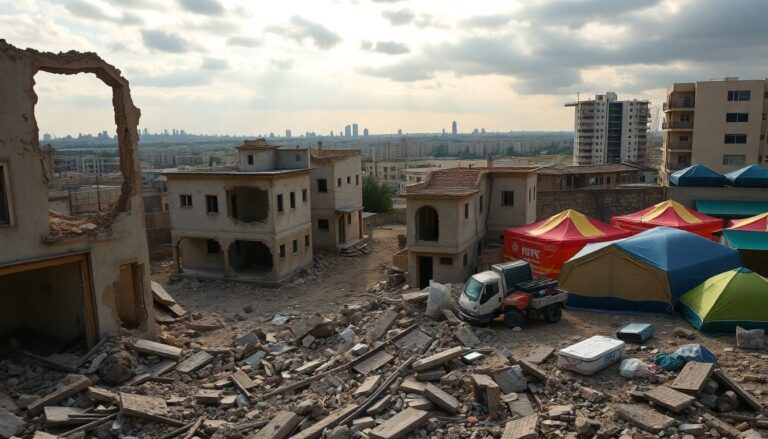Discover the intricate effects of Hamas on Israel after years of conflict in Gaza.

Temas cubiertos
The conflict between Hamas and Israel has shaped the landscape of the Middle East for years, particularly in regard to the humanitarian crisis in Gaza. This article seeks to unravel the complexities of this ongoing struggle and its implications for both parties involved.
In recent years, the situation in Gaza has escalated dramatically, leading to widespread devastation and loss of life. Understanding the underlying factors that contribute to this conflict is crucial for grasping its current state and potential future outcomes.
Historical Background of the Gaza Conflict
To comprehend the present dynamics, it’s essential to look back at the historical context surrounding the Gaza conflict. The roots of this struggle can be traced to the Israeli-Palestinian conflict, which has been ongoing since the mid-20th century. The establishment of Israel in 1948 marked a turning point, leading to the displacement of many Palestinians and a series of wars that further entrenched the divide.
Over the decades, various attempts have been made to broker peace, yet tensions have remained high. The rise of Hamas in the late 1980s added a new layer to the conflict. Initially founded as a social and religious movement, it soon transformed into a political and military entity opposing Israel’s existence. The group gained significant influence within the Palestinian territories, especially following its electoral victory in 2006.
Recent Developments in Gaza
The last two years have seen an intensification of military operations in Gaza, resulting in a staggering humanitarian crisis. The Israeli government has justified its actions as necessary for national security, aiming to neutralize the threat posed by Hamas. Conversely, critics argue that these military responses have led to disproportionate civilian casualties and widespread destruction.
The Humanitarian Impact
The continuous bombardment and blockades imposed on Gaza have severely affected the population’s quality of life. Access to basic necessities such as clean water, healthcare, and electricity remains critically limited. The UN has reported alarming statistics indicating that a significant percentage of the population lives below the poverty line, struggling daily to survive amid the chaos.
Moreover, the psychological toll of living in such conditions cannot be overlooked. Many residents suffer from post-traumatic stress disorder (PTSD), anxiety, and other mental health issues as a result of the violence and instability surrounding them. The long-term effects on the younger generation, who grow up in an environment of fear and uncertainty, are particularly concerning.
The Role of International Community
The international community has been closely monitoring the situation, with various nations and organizations calling for ceasefires and renewed peace talks. However, achieving a sustainable resolution remains elusive. The complexity of the conflict is compounded by differing political agendas and alliances.
Some countries support Hamas, viewing it as a legitimate resistance movement, while others condemn its actions as terrorism. This polarization has hindered diplomatic efforts, making it difficult to establish a consensus on how to address the crisis.
Future Prospects
Looking ahead, the prospects for resolving the conflict seem bleak. With entrenched positions on both sides, finding common ground is a formidable challenge. The ongoing violence continues to exacerbate tensions, making any form of dialogue increasingly difficult.
For Israel, the primary concern remains national security, while for Palestinians, the quest for self-determination and an end to occupation takes precedence. Until both sides are willing to engage in meaningful negotiations, the cycle of violence and suffering is likely to persist.
In conclusion, the conflict between Hamas and Israel is a deeply rooted struggle that has resulted in significant human suffering, particularly for those living in Gaza. Understanding the historical and contemporary factors at play is essential for anyone seeking to grasp the ongoing crisis and its implications for the future.




